How Does Wireless Charging Work?
Wireless charging is one of the modern features that high-end phone manufacturers are trying to entice their customers with. Just place your phone on the magic pad and it will start charging. The process is simple and in high demand among users, so support among manufacturers for this charging method is growing. Moreover, those whose device does not support wireless charging out of the box also have a chance to join the wireless charging train by teaching their phones the Qi standard. But how do you do that? And how does a wireless charger actually work?
How Does Wireless Charging Work – CONTENTS
- QI wireless charging
- How does wireless charging work?
- Pros and cons of wireless charging
- Choose a phone that supports Qi wireless charging
- What is reverse charging?
- Is it possible to wirelessly charge phones that don't support the Qi charging standard?
- Apple wireless charging with Magsafe support
Qi wireless charging
While it's already quite common for data to be transmitted over the air, we're still in the early days when it comes to charging. After a massive number of trial and error endeavours involving various technologies, the Qi [chi] standard, named after a Chinese word roughly translated as life energy, has finally gained the most traction. The standard was created in 2008 and has been growing in popularity ever since. Phones with wireless charging are slowly but surely becoming the norm.
Using electromagnetic induction, Qi wireless charging can transfer energy over a distance of under 1cm. The technology also comes with communication and control features. This allows you to see information on your device about the charging status. The charging pad can tell when there is no device in range to receive power. It will then immediately reduce its power output to a minimum and mitigate power consumption.
A number of mobile phone manufacturers (Samsung, HTC, Nokia, Sony and many others), as well as Swedish company IKEA, are in the manufacturers' association that has made Qi wireless charging the universal industry standard. So you can buy the power pad directly built into your bedside table, lamp or sofa. And it goes without saying that there are already multiple wireless power banks (or Qi power bank), on the market, which is basically a charging pad with its own rechargeable battery. A very practical device is also a wireless car charger. When buying a car charger, make sure that the phone can be stably attached to the device, either with a mount or magnets.
How does wireless charging work and how fast is it?
Wireless charging uses a very simple basic principle of electromagnetic induction. Its first use dates back to 1893, when Nikola Tesla lit a light bulb without any wires. Simply put, it is a phenomenon in which a so-called induced voltage and induced current are generated in an electric conductor due to a temporal change in the inductive flux.
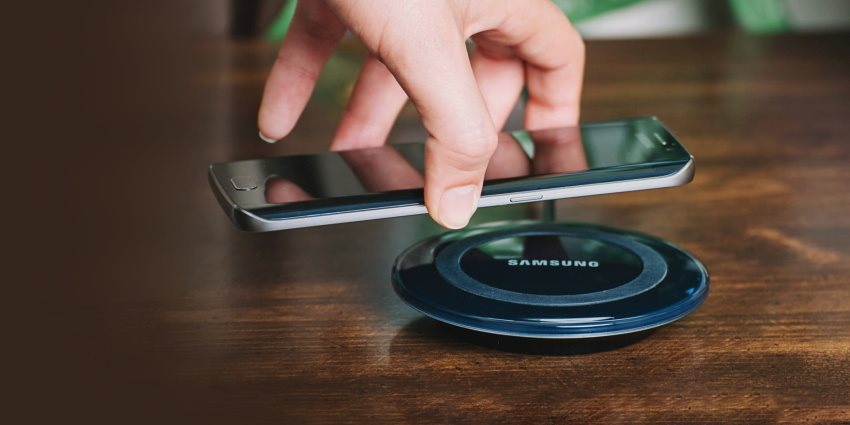
In practice, the system is based on electromagnetic induction generated between two printed coils. One is located in the charging pad connected by cable to the mains and the other must be included in the device being charged. Apart from charging electrical devices, this phenomenon is often encountered, for example, in induction cookers, where a current (and with it the desired heat, which is essentially a byproduct) is generated between a coil in the plate of the cooker and the conductive bottom of the pot.
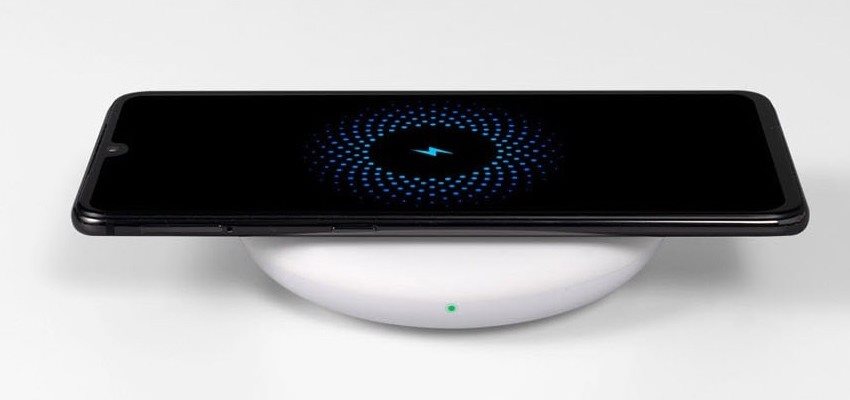
Wireless charging speeds are still rather slow compared to conventional wired chargers due to energy loss, but the technology is constantly evolving. So we are already seeing support for faster charging than a few years ago. When the Qi standard really got going in 2010, it supported a maximum power of 5W. Currently, it averages around 15W, but it always depends on the device in question how much power it can realistically draw.
In the past, iPhones have been limited to 7.5W. At that rate, you can charge less than half a battery in 2 hours, as measured by iphoneincanada.ca. The latest iPhone 12 series has doubled the wireless charging power to 15W. Android phones can often handle 15W as well, but there are devices on the market that far exceed that limit. Current record holders include the Huawei Mate 40 Pro, Xiaomi Mi 10 Pro and Xiaomi 11 - all of which offer an impressive 50W of wireless charging power.
Pros and cons of wireless charging
At first, support for this technology may have seemed like a gimmick that one gets mostly to show off before their friends. However, we have been using this technology for some time now and can appreciate its convenience. Rather than laboriously searching for the right cable and then carefully navigating it into the tiny port, putting the phone on the charging pad takes literally just a few second. Besides, there's the very useful reverse charging feature we shall talk about below. But as much as wireless charging is a highly practical thing, it also has its drawbacks. These are mainly:
- relatively high power loss,
- the device has to be placed directly on the coil; you can't charge with the phone in your hand as you are used to,
- it's slow compared to conventional wired charging,
- leaving a charged phone on the pad for longer can lead to battery degradation.
Choose a phone that supports Qi wireless charging
Although wireless charging dramatically increases user convenience and there are plenty of wireless chargers on the market, manufacturers only integrate them into more expensive smartphones. People with more budget models are out of luck for now.
The individual wireless chargers differ from each other mainly in terms of design. Compatibility is not an issue, they all support the Qi standard. A product label stating that the product supports "Huawei wireless charging" doesn't actually mean that it won't work with a different phone. However, always check if your phone supports wireless charging in general. But if you want, say, a design match, you can choose a wireless charger from the same manufacturer as the phone itself, matching an Apple wireless charger with your iPhone etc.

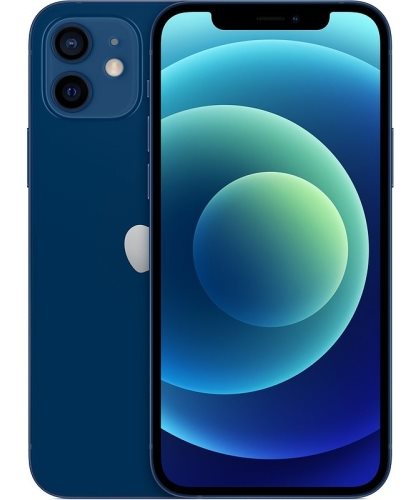
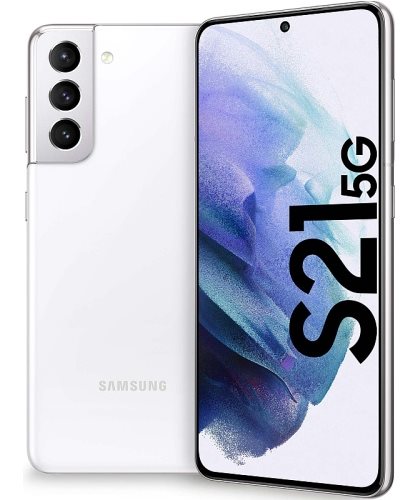
What is reverse charging?
Another advantage of wireless charging is that we can use the phone itself as a charger for devices that support wireless charging. This is useful for wireless headphones, for example. If you're outside and your headphones are running low on battery but your phone still has enough juice, you can put the headphones on the back of your phone and wait for them to recharge. This can be applied not only to the headphones, but also to the whole phone. Does your friend need a few extra percent? You can share your phone's battery with them. The reverse charging option is supported, for example, by Samsung wireless charging, with Samsung calling this feature PowerShare.
To facilitate wireless power transfer, phones need to have glass backs. This enables charging pad compatibility and it's why many smartphones have a back made of glass that also matches the glass on the front that covers the display.
Is it possible to wirelessly charge phones that don't support the Qi charging standard?
The answer to the question posed in the title is a resounding yes, it just won't be wireless charging in the true sense of the word and it's certainly not nearly as elegant as built-in charging support. You need to get a wireless charging adapter to make it all work. The wireless charging module is a very thin plate that has a short cable coming out of it that you plug into the USB-C port. This way, there's really no need to connect the phone to a charger, though the charging itself still takes place via the connector.
Apple wireless charging with Magsafe support
A significant problem with conventional wireless chargers is the fact that the phone has to stay on the charging pad the whole time, "coil to coil" in order to work as intended. In many cases, it is necessary to know the exact spot where the wireless charging takes place. Apple has come up with a solution by introducing the Magsafe wireless charger as part of its iPhone accessory range. So far only iPhone 12 models support it, but we expect the technology is here to stay. The wireless charger has magnets that keep the iPhone in its proper position.

Magsafe chargers are definitely no longer just the prerogative of Apple, which now offers a variant for both one, or two phones. A number of other manufacturers have also adapted the technology into their products.
We love Qi wireless charging and its simplicity and convenience, even though it's slower than a traditional charging cable. But it's a small drawback that many users will happily overlook in exchange for the benefits it offers.
What have we written about wireless charging before?
Modern smartphones have all sorts of fun features, but plugging in the charger and cable every day does get annoying. Read our tips to learn how to set up wireless charging so you can keep your phone powered 24/7.
How does wireless charging work?
Inductive charging is the most prominent example of this technology, with its first use dating back to 1893 when Nikola Tesla lit a light bulb without using any wires. The system is based on electromagnetic induction between two printed coils. One is located in a charging pad connected by a cable to the mains and the other must be built into the device being charged.
And good news - the number of phones prepped for wireless charging is growing very rapidly.
Some phones are equipped for wireless charging straight from the manufacturer
A shining example of already built-in wireless charging is Samsung's very flagship - Galaxy S6, S6 edge and S6 edge+. In this case, just get a sleek charging pad and you're good to go.

Other phones need some help
But even an older model can be upgraded to wireless charging without breaking the bank. All you have to do is buy a special module that supports the Qi standard and place it right next to the battery. It's quite easy to do and your user experience will improve significantly.
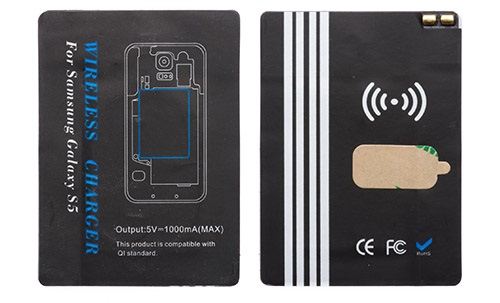
Premium Patriot solution
The final option is to purchase a custom FUEL iON case in which you comfortably slip in your phone. Then just clip it onto the magnetic base (also doubles as a charger), and you're done with all the charging hassle.
Wireless charging definitely has a future and engineers are already working hard to further improve the technology to make it work over longer distances, for example.


